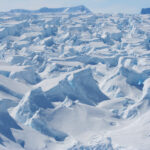Bipolar ice-core records constrain possible dates and global radiative forcing following the ∼74 ka Toba eruption
15 July, 2023 by Robert Mulvaney
The Younger Toba Tuff eruption ∼74 ka ago in Indonesia, is among the largest known supereruptions in the Quaternary and its potential impact on the climate system and human evolution…